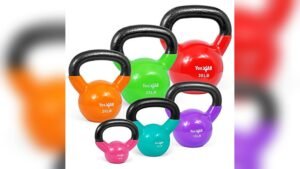Hypno Yoga is a fascinating blend of traditional yoga practices and hypnosis techniques, designed to enhance both physical and mental well-being. This unique practice has roots in ancient traditions but has been adapted to meet modern needs. Hypno Yoga offers a holistic approach to health, combining the physical benefits of yoga with the mental clarity and relaxation provided by hypnosis.
Table of Contents
TogglePhysical Benefits of Hypno Yoga
Hypno Yoga can significantly improve physical health. Regular practice can lead to increased flexibility, strength, and balance. The combination of yoga poses and hypnotic relaxation techniques helps to release tension in the muscles, promoting better posture and reducing the risk of injury.
• Flexibility: Yoga poses, or asanas, stretch and lengthen muscles, improving overall flexibility. This can be particularly beneficial for those who spend long hours sitting or have sedentary lifestyles.
• Strength: Many yoga poses require holding the body in specific positions, which builds muscle strength. This is especially true for poses that engage the core muscles.
• Balance: Practicing balance poses in yoga helps to improve coordination and stability. This can be beneficial for people of all ages, particularly older adults who may be at risk of falls.
Mental and Emotional Benefits of Hypno Yoga
The mental and emotional benefits of Hypno Yoga are profound. The practice combines the mindfulness of yoga with the deep relaxation of hypnosis, creating a powerful tool for mental health.
• Stress Reduction: Hypno Yoga helps to lower stress levels by promoting relaxation and mindfulness. The hypnotic aspect of the practice can help to calm the mind and reduce anxiety.
• Improved Focus: The meditative aspects of Hypno Yoga can enhance concentration and mental clarity. This can be particularly beneficial for those who struggle with attention issues.
• Emotional Balance: Hypno Yoga can help to regulate emotions and improve mood. The practice encourages self-awareness and mindfulness, which can lead to better emotional regulation.
How to Practice Hypno Yoga
Practicing Hypno Yoga involves a combination of yoga poses, breathing exercises, and hypnotic techniques. Here are some steps to get started:
1. Find a Quiet Space: Choose a quiet, comfortable space where you won’t be disturbed. This will help you to focus and relax.
2. Set an Intention: Before you begin, set an intention for your practice. This could be something like “I am calm and relaxed” or “I am strong and flexible.”
3. Warm-Up: Start with some gentle warm-up exercises to prepare your body for the yoga poses.
4. Yoga Poses: Move through a series of yoga poses, focusing on your breath and staying present in the moment.
5. Hypnotic Techniques: Incorporate hypnotic techniques such as guided visualization or progressive muscle relaxation. This can be done during the yoga poses or as a separate part of your practice.
6. Cool Down: Finish with some gentle stretches and a period of relaxation.
Key Techniques in Hypno Yoga
Breathing Techniques

Breathing is a fundamental aspect of both yoga and hypnosis. In Hypno Yoga, specific breathing techniques are used to enhance relaxation and focus.
• Deep Breathing: Deep, slow breaths can help to calm the nervous system and promote relaxation. Try inhaling for a count of four, holding for a count of four, and exhaling for a count of four.
• Alternate Nostril Breathing: This technique involves breathing through one nostril at a time, which can help to balance the body’s energy and promote mental clarity.
• Ujjayi Breathing: Also known as “ocean breath,” this technique involves breathing in and out through the nose with a slight constriction in the throat. This creates a soothing sound and helps to focus the mind.
Visualization Techniques
Visualization is a powerful tool in Hypno Yoga. It involves creating mental images to promote relaxation and achieve specific goals.
• Guided Visualization: This technique involves listening to a guided meditation that leads you through a series of calming images. This can help to reduce stress and promote relaxation.
• Positive Imagery: Visualizing positive outcomes can help to boost confidence and motivation. For example, you might visualize yourself successfully completing a challenging yoga pose.
• Body Scanning: This involves mentally scanning your body from head to toe, noticing any areas of tension and consciously relaxing them.
Combining Hypnosis and Yoga
The Role of Hypnosis in Yoga

Hypnosis plays a crucial role in Hypno Yoga. It involves entering a state of deep relaxation and heightened focus, which can enhance the benefits of yoga.
• Deep Relaxation: Hypnosis helps to induce a state of deep relaxation, which can enhance the physical benefits of yoga. When the body is relaxed, it is easier to stretch and move into yoga poses.
• Mental Focus: Hypnosis can help to improve mental focus, making it easier to stay present during yoga practice. This can enhance the meditative aspects of yoga and promote mindfulness.
• Emotional Healing: Hypnosis can help to release emotional blockages and promote healing. This can be particularly beneficial for those who use yoga as a tool for emotional well-being.
Integrating Yoga Poses with Hypnosis
Integrating yoga poses with hypnosis involves combining the physical movements of yoga with the mental focus of hypnosis.
• Mindful Movement: Move through yoga poses mindfully, focusing on your breath and staying present in the moment. This can help to deepen the relaxation and enhance the benefits of the poses.
• Guided Hypnosis: Listen to a guided hypnosis session while practicing yoga. This can help to enhance relaxation and focus.
• Self-Hypnosis: Practice self-hypnosis techniques during yoga. This might involve repeating a calming mantra or visualizing a peaceful scene.
Hypno Yoga for Stress Relief
Techniques for Reducing Stress
Hypno Yoga is an effective tool for stress relief. The combination of yoga and hypnosis can help to calm the mind and relax the body.
• Mindfulness Meditation: Practice mindfulness meditation during yoga. This involves focusing on the present moment and letting go of any distracting thoughts.
• Body Scanning: Use body scanning techniques to notice any areas of tension and consciously relax them.
• Positive Affirmations: Repeat positive affirmations during yoga practice. This can help to shift your mindset and reduce stress.
Case Studies and Testimonials
Many people have found Hypno Yoga to be an effective tool for stress relief. Here are some testimonials:
• Jane’s Story: “I started practicing Hypno Yoga to help with my anxiety. The combination of yoga and hypnosis has been incredibly calming. I feel more relaxed and centered after each session.”
• Tom’s Experience: “As a busy professional, I often feel stressed and overwhelmed. Hypno Yoga has been a game-changer for me. It helps me to relax and clear my mind, making it easier to handle the demands of my job.”
• Sarah’s Journey: “I was skeptical about Hypno Yoga at first, but it has made a huge difference in my life. I feel more balanced and at peace. It’s a wonderful way to unwind and de-stress.”
Advanced Hypno Yoga Practices
Deepening Your Practice
For those who are ready to take their Hypno Yoga practice to the next level, there are several advanced techniques to explore.
• Personalized Sessions: Work with a Hypno Yoga instructor to create personalized sessions that address your specific needs and goals.
• Goal-Specific Routines: Develop routines that focus on specific goals, such as improving flexibility, reducing stress, or enhancing mental clarity.
• Deep Trance States: Explore deeper trance states through advanced hypnosis techniques. This can enhance the relaxation and mental benefits of Hypno Yoga.
Hypno Yoga for Specific Goals
Hypno Yoga can be tailored to meet specific goals. Here are some examples:
• Weight Loss: Combine yoga poses that promote weight loss with hypnotic techniques that boost motivation and reduce cravings.
• Pain Management: Use Hypno Yoga to manage chronic pain. The combination of gentle yoga poses and hypnosis can help to reduce pain and promote healing.
• Improved Sleep: Practice Hypno Yoga before bed to improve sleep quality. The relaxation techniques can help to calm the mind and prepare the body for restful sleep.
Relevant Data Table For Hypno Yoga:
| Aspect | Description |
|---|---|
| Physical Benefits | Improved flexibility, strength, and balance |
| Mental Benefits | Enhanced focus, reduced anxiety, and better stress management |
| Key Techniques | Breathing exercises, guided visualization, and progressive muscle relaxation |
| Stress Relief Methods | Mindfulness meditation, body scanning, and positive affirmations |
| Advanced Practices | Personalized sessions, goal-specific routines, and deep trance states |
FAQs:
What is Hypno Yoga?
Hypno Yoga is a unique practice that combines the physical postures of yoga with the mental relaxation techniques of hypnosis. This blend aims to enhance both physical and mental well-being. The practice involves moving through yoga poses while incorporating hypnotic techniques such as guided visualization and deep breathing. This combination helps to deepen relaxation, improve focus, and promote overall health.
The origins of Hypno Yoga can be traced back to ancient practices, but it has been adapted to meet modern needs. The practice is designed to be accessible to people of all fitness levels and can be tailored to meet individual goals. For more information, you can visit My Hypno Yoga.
How often should I practice Hypno Yoga?
The frequency of Hypno Yoga practice can vary depending on individual goals and schedules. However, many practitioners find that practicing 2-3 times per week is beneficial. Consistency is key to experiencing the full benefits of Hypno Yoga. Regular practice helps to build strength, improve flexibility, and enhance mental clarity.
It’s important to listen to your body and not overdo it. If you’re new to Hypno Yoga, start with shorter sessions and gradually increase the duration as you become more comfortable with the practice. For more tips on getting started, you can visit My Hypno Yoga.
Can beginners practice Hypno Yoga?
Yes, Hypno Yoga is suitable for beginners. The practice can be adapted to meet the needs of individuals at all fitness levels. Beginners can start with basic yoga poses and simple hypnotic techniques, gradually progressing to more advanced practices as they become more comfortable.
It’s recommended to start with guided sessions, either in-person or online, to learn the proper techniques and ensure a safe practice. As you become more familiar with Hypno Yoga, you can begin to tailor the practice to meet your specific goals and needs.
What equipment do I need for Hypno Yoga?
The equipment needed for Hypno Yoga is minimal, making it an accessible practice for most people. Here are some basic items you might need:
• Yoga Mat: A comfortable, non-slip yoga mat provides a stable surface for practicing yoga poses.
• Comfortable Clothing: Wear clothing that allows for a full range of motion and is comfortable for both yoga and relaxation.
• Blanket or Cushion: These can be used for added comfort during relaxation and meditation.
• Water Bottle: Staying hydrated is important, especially during longer sessions.
Optional items include yoga blocks, straps, and bolsters, which can provide additional support and enhance your practice.
Are there any risks associated with Hypno Yoga?
Hypno Yoga is generally considered safe for most people. However, as with any physical activity, there are some risks to be aware of. It’s important to practice with proper technique and listen to your body to avoid injury.
• Physical Risks: Overstretching or improper alignment can lead to muscle strains or joint injuries. It’s important to practice with proper form and not push beyond your limits.
• Mental Risks: Hypnosis can sometimes bring up unresolved emotions or memories. If you experience any discomfort or distress during hypnosis, it’s important to stop and seek support from a qualified professional.
Consulting with a healthcare provider before starting any new exercise program is always a good idea, especially if you have any pre-existing health conditions.
Conclusion:
Hypno Yoga offers a unique blend of physical, mental, and emotional benefits by combining the principles of yoga and hypnosis. Whether you are looking to reduce stress, improve your physical health, or achieve specific personal goals, Hypno Yoga provides a holistic approach to well-being. By incorporating key techniques such as breathing exercises and visualization, practitioners can deepen their practice and experience profound transformations.
Posts References:
About Kellie – Hypno Yoga
Welcome To HypnoYoga – Hypno Yoga







